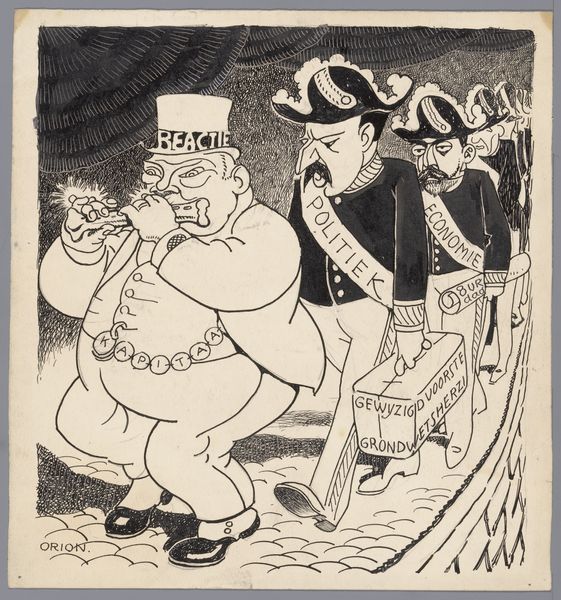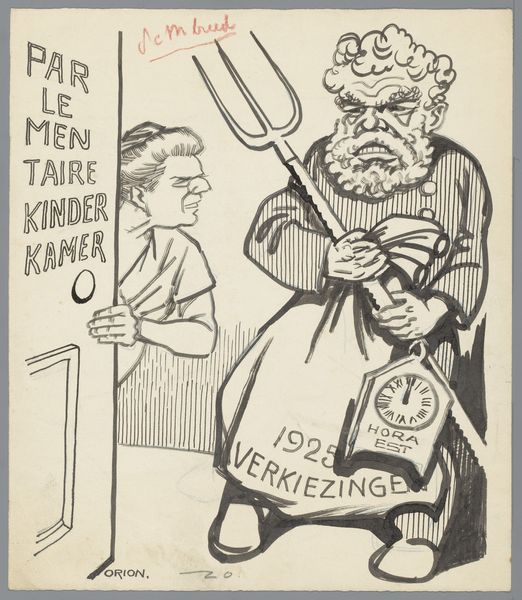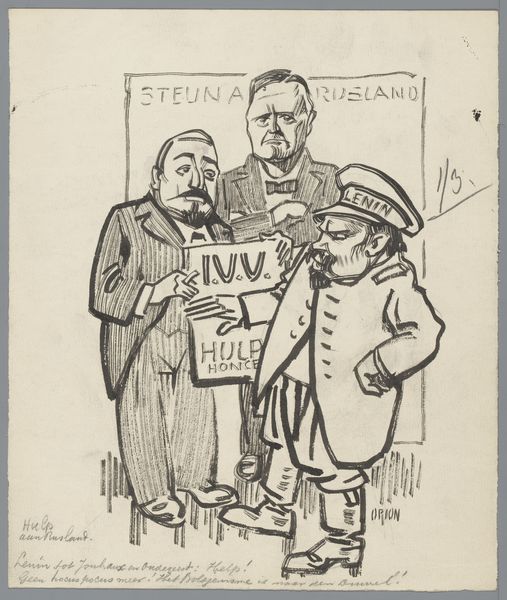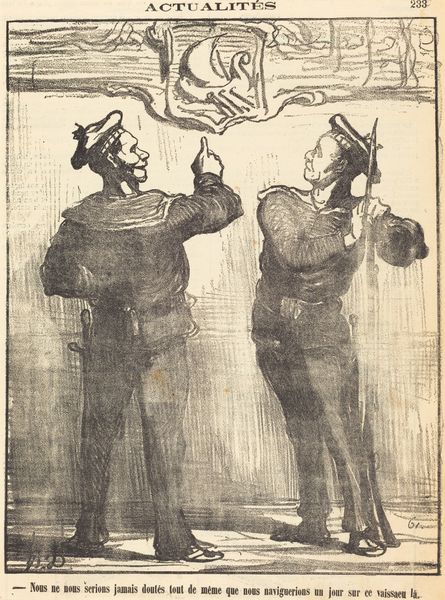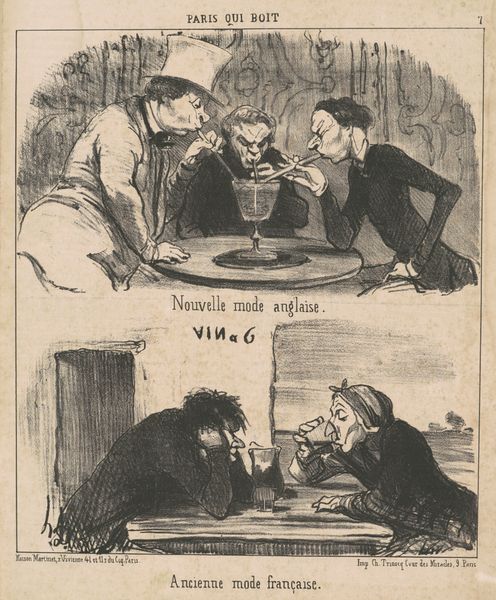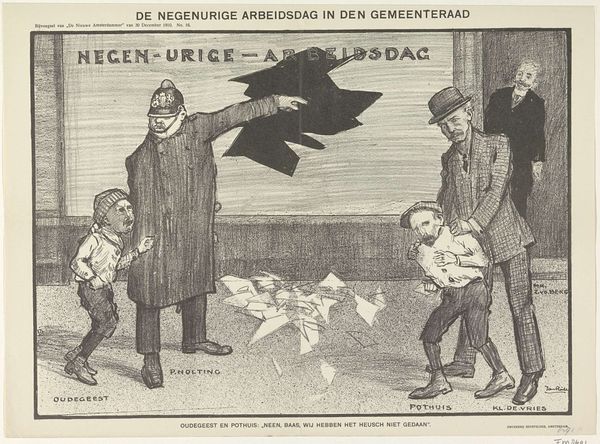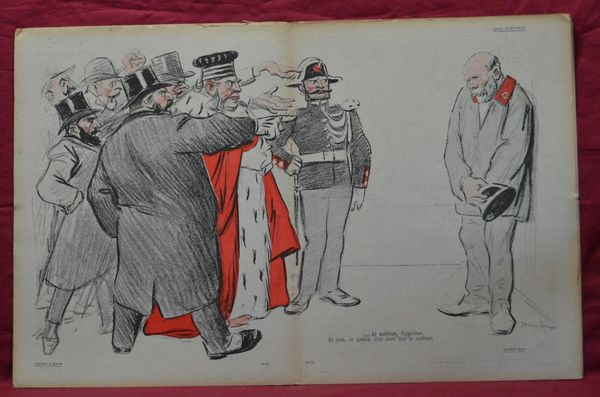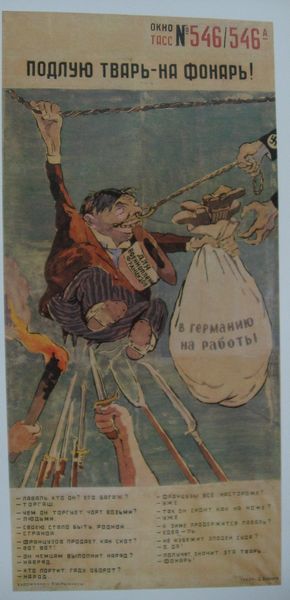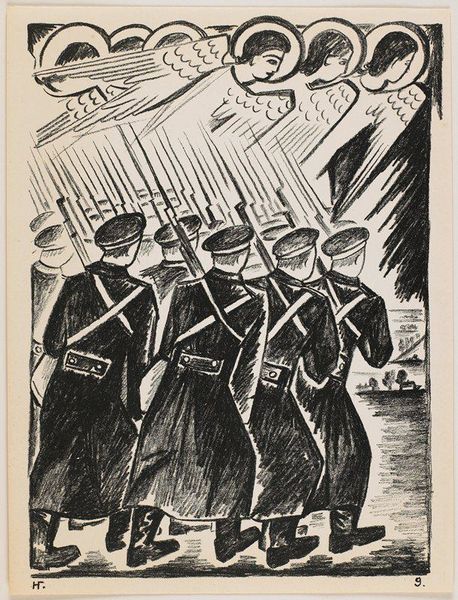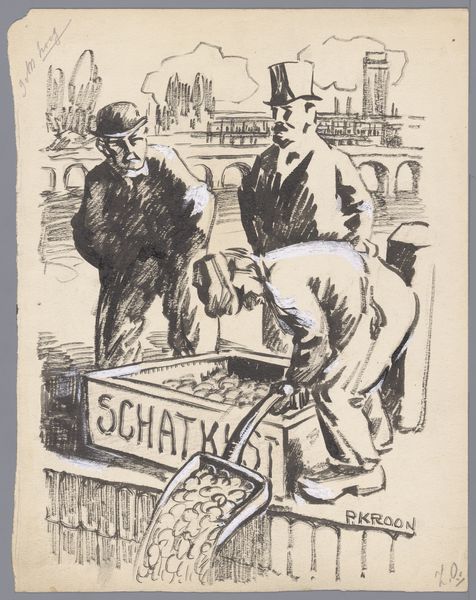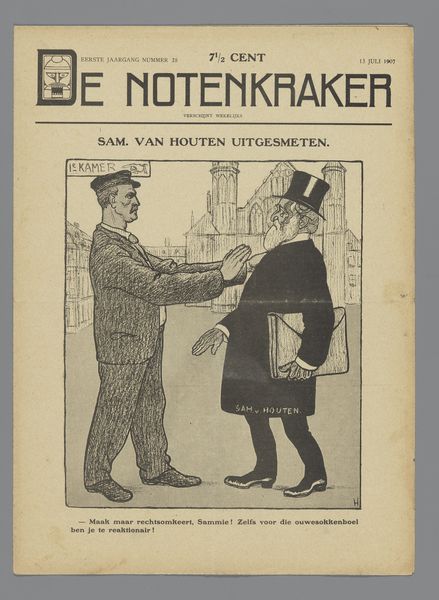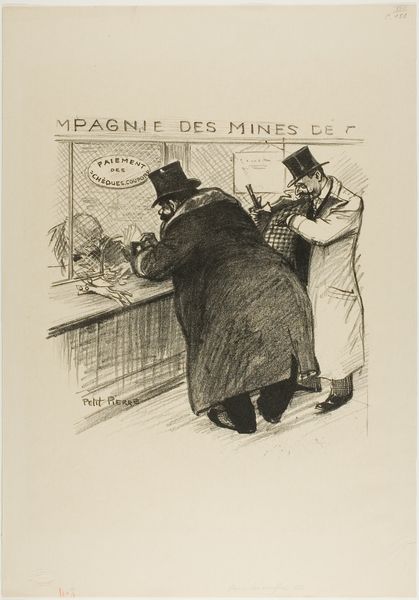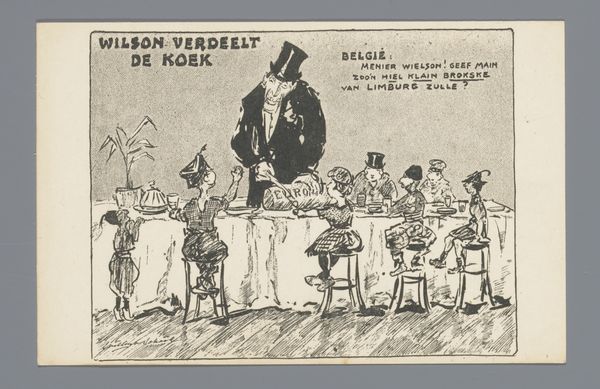
drawing, print, paper, ink
#
drawing
#
comic strip
# print
#
paper
#
ink
#
comic
#
genre-painting
Dimensions: length 14 cm, width 9.5 cm
Copyright: Rijks Museum: Open Domain
Curator: Here we have Willem van Schaik's "Waar de Hollandsche aardappels gebleven zijn..." made during the years of 1914 to 1918. It's a print drawing in ink on paper, resembling a political comic. Editor: The stark hatching and caricature-like qualities lend this work a grim, unsettling tone despite the seemingly mundane subject. It’s difficult to ascertain meaning, beyond something ominous. Curator: Formally, the artist employs stark contrasts in shading to highlight the figures. Observe the heavy outlines and the cross-hatching that defines the folds in their uniforms. The composition focuses on three figures seated at a table, dominated by a central figure with what appears to be a large pile of potatoes. Note how the perspective flattens the scene, pushing the figures to the forefront and emphasizing their size and presence. Editor: The political context is unavoidable. Consider the period—World War I. The figures in their uniforms and helmets are clearly German soldiers. The title, which translates to "Where have the Dutch potatoes gone?", insinuates the confiscation of resources. This image is laden with themes of occupation, control, and scarcity under wartime conditions. Curator: Indeed, the meticulous rendering of the uniforms contrasts sharply with the almost grotesque portrayal of the central figure's face. This contrast serves to highlight the dehumanizing aspects of war, reducing individuals to mere symbols of power and oppression. Van Schaik's sophisticated use of line creates texture that invites close visual inspection. Editor: Right, and within a broader narrative, this work is a scathing commentary on the realities of war—the brutal economic control exerted over occupied territories, the famine caused by such policies, and the faces of the perpetrators, smug and gluttonous in their conquest. It stands as a testament to resistance through art. Curator: Ultimately, "Waar de Hollandsche aardappels gebleven zijn..." exemplifies the power of graphic arts as a medium to address the aesthetic value inherent in visual rhetoric itself, quite separate from narrative elements. Editor: And it reminds us that beneath the surface of satire lies a potent socio-political statement. These historical reflections remain deeply resonant.
Comments
No comments
Be the first to comment and join the conversation on the ultimate creative platform.
